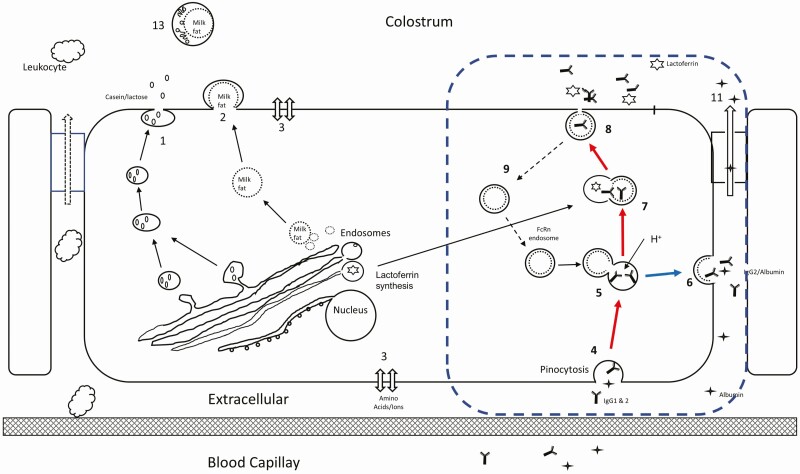Figure 1.
Mechanisms of colostrum production. Pathways 1 and 2 are dominant during copious milk secretion accounting for casein, lactose, and fat. The separate pathway for colostrum formation is shown in the dashed blue rectangle. Pathway 4,5,7, & 8 (red arrows) provides a separate path for extracellular IgG to enter the cell and associates with FcRn (5) and the V-ATPase lowers the pH (H+) to provide binding. The FcRn:IgG2 bound components are directed to be recycled (path 6, blue arrow) while FcRn:IgG1 components are directed toward colostrum (red arrows). The addition of lactoferrin (7) with the FcRn:IgG1 complex enables the release of the IgG1 and subsequent secretion into the forming colostrum (8) with the FcRn endosome recycled (9).

